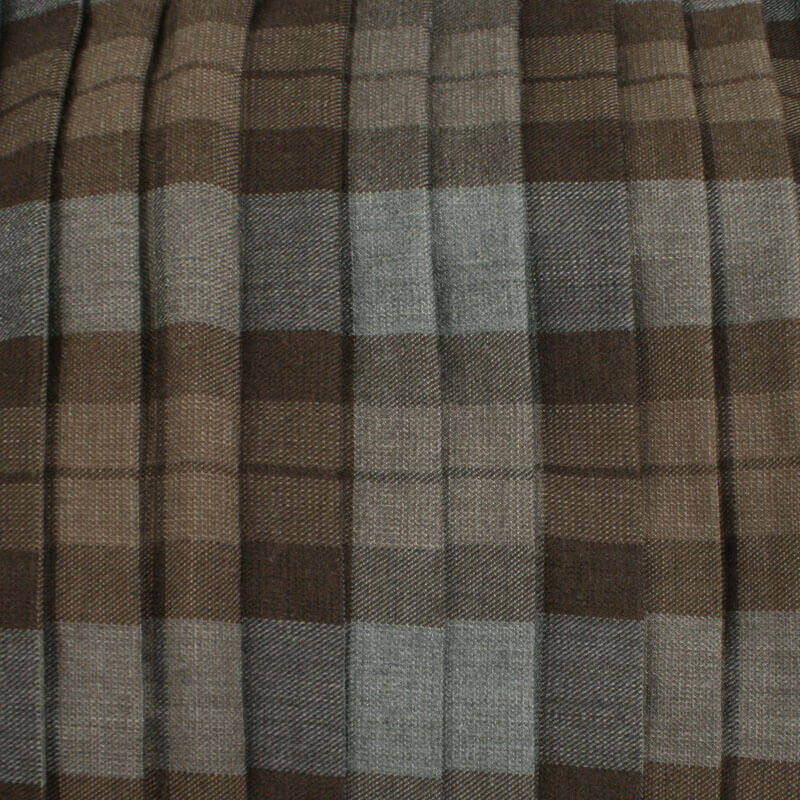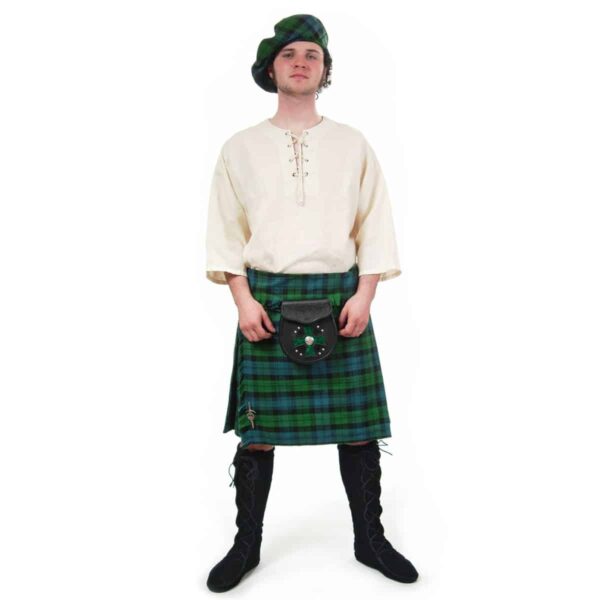Description
Add Cheater Pleats to Your Kilt!
Cheater Pleats™ are a nice convenience option. Your kilt will still look like you pleated it yourself, but you can take it off and put it back on any time you want to without redoing your pleats. (Depending on how concerned you are about the appearance, pleating your kilt can take anywhere from a few minutes to a half hour each time you wear it). we’ll pleat the kilt for you, and stitch in a hidden waistband to hold it together. Once you belt it on, no one will know you didn’t pleat it yourself!
Here are your choices and measurements needed:
Kilt Waist: Measure your waist size in inches, at your actual waist, where you usually wear your pants. This will probably be 2-4 inches larger than your pants size.
Kilt Length: Measure from your waist to about the middle of the knee. Have someone help you! If you bend even a little while trying to do it yourself, the measurement will be wrong.
Style of Pleats:
Pleat to sett – each pleat is positioned so that the pattern (sett) appears to continue through the pleated portion of the kilt.
Pleat to stripe – we choose a prominent stripe in the pattern and center the stripe down the middle of each pleat. This is a traditional military style, and can look very nice. Some tartans just don’t look good pleated to stripe however. If you choose this option we will let you know if it can’t (or shouldn’t) be done.
Box pleats – another traditional military style. Every other pleat is reversed. This creates pleats twice as wide (3 to 4 inches wide depending on the sett width of the tartan you choose) with tartan folded under both edges of the pleat. Incidentally, box pleating uses less tartan, so you can actually get by with a 6 yard kilt all the way up to a 50 inch waist. If your waist size is larger than 50 inches, and you would like box pleats, select a 9 yard Ancient Kilt.
Iron Pleats:
Do Not Iron – Will give the appearance of a kilt just pleated by hand.
Lightly Iron – Will help shape the pleats but still look rustic.
Crisply Iron – Will defined the pleats and help with “the swoosh effect” of the kilt. Great for dancers, or for a more formal look.
Strap(s) & Buckle(s):
Ancient Kilts – For an additional $25 we will stitch a leather strap and buckle inside the kilt to assist in putting your kilt on and keeping it on. It will be hidden out of sight, but allows you to tighten up the inside apron so you are not as dependent on the belt to hold things together. Not at all necessary, but nice for even more convenience. A belt will still be required to hold your kilt on.
Great Kilts – For an additional $35 we will stitch a pair of leather straps and buckles on your kilt to help you with putting your kilt on and keeping it on. Not at all necessary, but a nice convenience option. Straps and buckles on a Great Kilt will make it so you are not as dependent on the belt to hold things together, but a belt will still be required to help hold your kilt on, and to complete the look.
Phillabegs – For an additional $35 we will stitch a pair of leather straps and buckles on your kilt — one inside the kilt on the left hip, and one outside the kilt on the right hip. Both straps and buckles will be hidden once you get your kilt on. Of the three types of kilts, the Phillabeg benefits most from straps and buckles. You can wear a belt if you want to, but you don’t have to. The straps and buckles will hold your kilt on just fine without any help from a belt. This is my personal favorite kilt, and pretty-much all I wear to our Summer events. A Phillabeg with straps and buckles is light and unrestricting, and very easy to wear.





Reviews
There are no reviews yet